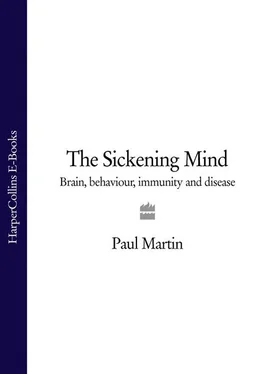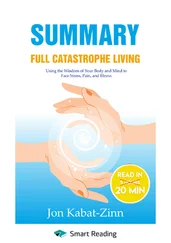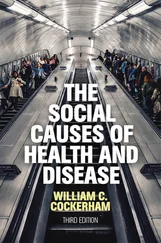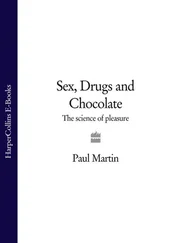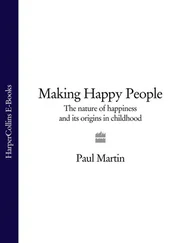The links between the mind, emotions, behaviour, disease and death have indeed been reflected in the lives of fictional characters over the centuries. The writers describing these mind – body phenomena obviously had no conception of their biological basis, but that did not stop them noticing and portraying the connections. Throughout this book I shall be referring to literary illustrations of the links between psychological factors and disease. But first, let me spell out what these fictional case histories are intended to convey and, perhaps more importantly, what they are not intended to convey.
I shall use literary allusions because they help to convey complex scientific ideas in a recognizable form. Well-turned examples drawn from literature are more cogent and more entertaining than any medical case history, no matter how supposedly authentic it may be. They also demonstrate the antiquity and universality of many of the concepts that underlie current theories. However, by citing fictional characters or situations to illustrate scientific theories I am certainly not implying that they constitute hard evidence in support of those theories. Fine words drawn from the imaginations of long-dead authors are clearly not the same as scientific data.
The idea that physical decline can stem directly from mental and emotional decline is a familiar theme in literature. Fictional characters often die from unrequited love, grief, shame or fury. Emily Brontë’s Wuthering Heights , for example, is positively bulging with characters whose mental states lay waste their physical health. Death and disease run riot throughout the book. Let me remind you.
Believing his childhood sweetheart Catherine has spurned him, the tempestuous Heathcliff vanishes. Catherine, who does in fact love Heathcliff, is deeply upset and ridden with guilt. She consequently becomes mentally unstable and physically ill. Three years later Heathcliff returns. Catherine is torn between her love for Heathcliff and her love for Edgar Linton, whom she has meanwhile married. She breaks down under the mental pressure, shuts herself in her room and sinks into delirium. The vengeful Heathcliff subjects Catherine to an emotional battering which further weakens her health and she dies giving birth, a victim of psychological torment.
The bereaved Heathcliff determines to achieve his longed-for union with Catherine through his own death. He locks himself in a darkened room and wills himself to die. Four days later a servant enters the room to find his body. Heathcliff’s mind has killed him, as surely as if he had been shot:
Kenneth was perplexed to pronounce of what disorder the master had died. I concealed the fact of his having swallowed nothing for four days, fearing it might lead to trouble, and then, I am persuaded he did not abstain on purpose; it was the consequence of his strange illness, not the cause.
Death by shame is the tragic fate awaiting Madame de Tourvel in Choderlos de Laclos’s Les Liaisons Dangereuses , that tale of sexual intrigue among the enormously rich, enormously idle and enormously depraved aristocrats of pre-Revolutionary eighteenth-century France.
The young, pious and austere Madame de Tourvel is a devoted wife. Nevertheless, she is ruthlessly seduced by a satanic libertine, the Vicomte de Valmont – a man who ‘has spent his life bringing trouble, dishonour, and scandal into innocent families’. Valmont is egged on by the Marquise de Merteuil, his equally amoral former lover. Together they plot their seductions with the cold, unemotional precision of a military campaign.
Facing stiff resistance from the virtuous Madame de Tourvel, Valmont eventually breaks down her defences by convincing her that he will die from emotional torment unless she surrenders herself to him. Unable to resist his wiles any longer, Madame de Tourvel succumbs and Valmont has his wicked way with her.
The awful truth is then revealed – Valmont has cruelly deceived Madame de Tourvel and does not love her at all. In a fit of anguish and shame she flees to a convent, locks herself away and announces that she will not leave until she is dead. Her health rapidly deteriorates:
A burning fever, violent and almost continual delirium, an unquenchable thirst … The doctors say they are as yet unable to diagnose … As long as she is so deeply affected, I have scarcely any hope. The body is not easily restored to health when the spirit is so disturbed.
The wretched Madame de Tourvel dies, destroyed by her grief and shame. No physical agent, other than Valmont, has intervened.
Fate, however, wreaks its just revenge on the perfidious Vicomte de Valmont and Madame de Merteuil. Valmont is fatally injured in a duel. Soon afterwards, the correspondence of Valmont and Merteuil, detailing their devilish seductions, is revealed and becomes the topic of widespread gossip. Madame de Merteuil is publicly humiliated, and one day later is afflicted by a virulent attack of smallpox which leaves her horribly disfigured and blind in one eye.
Another victim of physical decline brought on by seduction and shame is the eponymous heroine of Samuel Richardson’s eighteenth-century blockbuster Clarissa . (At over a million words, it is also the longest novel in the English language.) Clarissa, a young lady of refined sensibilities, is seduced and raped by a superficially charming but unscrupulous bounder. Naturally – for this is eighteenth-century England – the dishonoured Clarissa is rejected and ostracized by her family and society. As her mental state declines, so does her physical health. Clarissa retreats into solitude and dies from grief and shame. Once again, a character’s psychological and emotional state has been the prime cause of her death.
There are of course innumerable other examples, all making similar points about the impact of emotions on health. 3 We shall encounter a number of these in later chapters, and I hope it will be apparent that the notions they portray do bear some relationship to the reality revealed by modern science. However, at the risk of repeating myself, let me repeat myself: the fantasies of novelists are not the same as hard scientific evidence. Fortunately, there is plenty of that as well.
O Rose, thou art sick.
The invisible worm
That flies in the night
In the howling storm,
Has found out thy bed
Of crimson joy,
And his dark secret love
Does thy life destroy.
William Blake, ‘The Sick Rose’,
Songs of Experience (1794)
The sharp divide between those who proffer psychological explanations for diseases and those who reject such theories in favour of purely physical causes is reflected in attitudes towards two particular disorders: tuberculosis and chronic fatigue syndrome.
Sir Peter Medawar, the Nobel Prize-winning immunologist and virtuoso science writer, once described tuberculosis as ‘an affliction in which a psychosomatic element is admitted even by those who contemptuously dismiss it in the context of any other ailment.’ There is abundant evidence, dating back hundreds of years, that the course and progression of tuberculosis are influenced by the sufferer’s mental state. The physical health of tuberculosis sufferers shows a tendency to deteriorate when they are subjected to severe stress or emotional upsets.
Someone who is infected with Mycobacterium tuberculosis , the bacterium that causes tuberculosis, develops a protective immune response which can hold the bacteria in check and prevent them from multiplying. The resulting stalemate between body and bacteria can mean that the disease will remain dormant for years. But if something happens to compromise or weaken the body’s immune defences, the bacteria can run riot and cause a resurgence of disease.
Читать дальше
